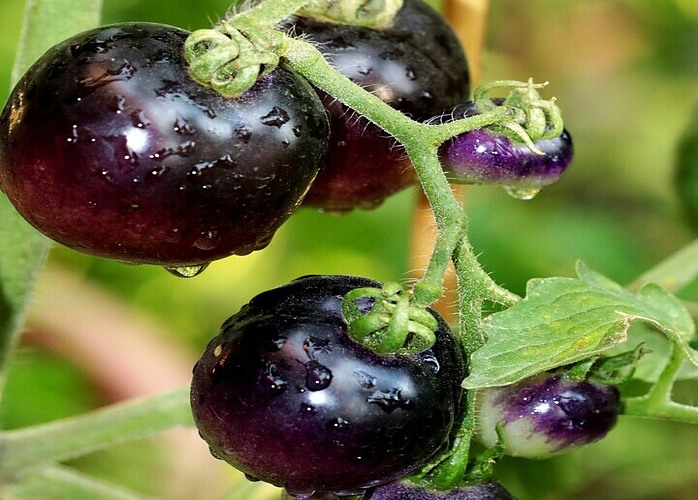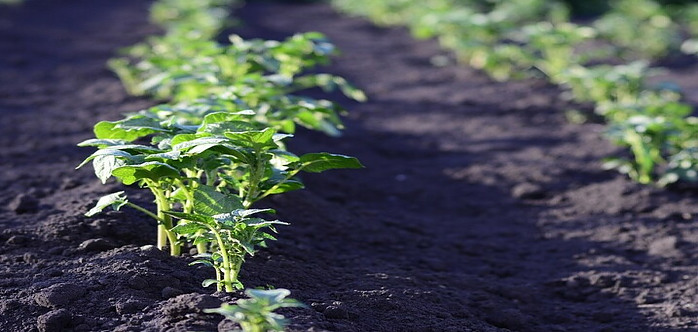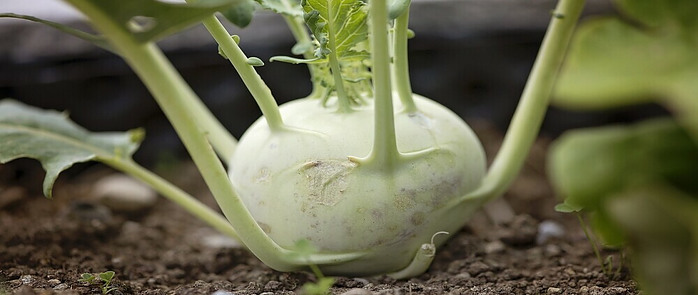 Welcome to the world of organic vegetable gardening, where health, taste, and environmental stewardship converge. Growing organic vegetables means your family can enjoy healthy, tasty, fresh produce free from synthetic chemicals or pesticides. This journey into organic gardening isn’t just about yielding a bountiful harvest; it’s about participating in a sustainable and eco-friendly approach to living. From the rich, nourishing soil to the crisp vegetables on your plate, every step in this process is rooted in natural care and respect for the environment. In this blog post, we’ll guide you through each stage of creating your own organic vegetable garden – from preparing organically enriched soil to choosing the right non-GMO seeds and seedlings. So, roll up your sleeves and get ready to plant a garden that’s as good for the Earth as it is for your health.
Welcome to the world of organic vegetable gardening, where health, taste, and environmental stewardship converge. Growing organic vegetables means your family can enjoy healthy, tasty, fresh produce free from synthetic chemicals or pesticides. This journey into organic gardening isn’t just about yielding a bountiful harvest; it’s about participating in a sustainable and eco-friendly approach to living. From the rich, nourishing soil to the crisp vegetables on your plate, every step in this process is rooted in natural care and respect for the environment. In this blog post, we’ll guide you through each stage of creating your own organic vegetable garden – from preparing organically enriched soil to choosing the right non-GMO seeds and seedlings. So, roll up your sleeves and get ready to plant a garden that’s as good for the Earth as it is for your health.
Understanding Organic Gardening
Organic gardening is more than just a method of growing vegetables; it’s a philosophy rooted in the principles of sustainability and harmony with nature. So what makes gardening truly organic and what benefits does this method offer?
- Defining Organic Gardening: At its core, organic gardening involves cultivating plants without synthetic fertilizers, pesticides, or genetically modified organisms (GMOs). It’s a holistic approach that focuses on building healthy soil, conserving water, and fostering biodiversity.
- Organic vs. Conventional Gardening: Unlike conventional gardening, which often relies on chemical inputs, organic gardening uses natural processes to nurture plants. This approach not only reduces the chemical load in our environment but also promotes a healthier ecosystem.
- Benefits for Health and Environment: The shift towards organic gardening reflects a broader awareness of health and environmental concerns. By avoiding synthetic chemicals, organic gardeners ensure that their produce is free from potentially harmful residues, making it safer and healthier for consumption. This practice also plays a crucial role in preserving soil health, supporting pollinators, and reducing the carbon footprint associated with food production.
Organic gardening goes beyond producing fresh vegetables. It’s about nurturing a space where nature can thrive in its purest form. This approach has been gaining momentum, as more people recognize the interconnectedness of our health and the health of our planet. In embracing organic methods, we make a conscious choice to be stewards of the Earth, safeguarding it for future generations.

Preparation of the Soil
Healthy soil is the foundation of any successful organic garden. Preparing your soil organically ensures your vegetables get the best start possible.
Testing Soil Quality: Before adding anything, it’s crucial to understand your soil’s current condition. Simple testing kits can reveal the pH level and nutrient content, guiding you on what your soil needs.
- Enriching Soil Organically: Organic matter is key to fertile soil. Adding compost, aged animal manure, and green manure (cover crops) can significantly improve soil health. These natural fertilizers not only enrich the soil with nutrients but also improve soil structure, water retention, and microbial activity.
- Maintaining Soil Health: Regular addition of organic matter and practices like crop rotation and companion planting help keep long-term soil health. Avoiding soil compaction by minimizing tilling and walking on garden beds is also essential in keeping the soil structure intact.
Choosing the Right Location
The location of your garden can significantly influence its success.
- Sunlight and Shade: Most vegetables require at least 6-8 hours of direct sunlight daily. Observe the patterns of sun and shade in your potential garden area throughout the day to find the best spot.
- Wind and Exposure: Protect your garden from strong winds which can damage plants and dry out the soil. Use natural windbreaks or fences if necessary.
- Space and Layout: Consider the space available for your garden. Even small areas or container gardens can be productive. Plan your garden layout keeping in mind the size and growth habits of different vegetables, as well as ease of access for maintenance and harvesting.
- Proximity to Water Source: Ensure your garden is near a convenient water source. Efficient watering systems like drip irrigation or soaker hoses can be very beneficial in maintaining consistent moisture levels.
Choosing the right location is about balancing sunlight, protection, and convenience to create a nurturing environment for your organic vegetables.

Selecting Non-GMO Seeds and Seedlings
Choosing the right seeds and seedlings is pivotal in organic gardening. Here’s how to ensure you’re selecting non-GMO and healthy varieties:
- Identifying Non-GMO Seeds and Seedlings: Look for labels or certifications indicating that the seeds are non-GMO. Many seed companies and nurseries now provide a wide range of organic and non-GMO options. Researching seed suppliers committed to sustainable practices can also be beneficial.
- Advantages of Non-GMO Plants: Non-GMO plants are often more resilient and better adapted to local growing conditions. They contribute to biodiversity and help keep the genetic diversity of plant species.
- Recommendations for Beginners: If you’re new to gardening, start with easy-to-grow vegetables like lettuce, radishes, carrots, and tomatoes. Choose varieties that are known for their hardiness and suitability to your climate.
Remember, the seeds you choose are the foundation of your organic garden, so select them thoughtfully.
Planting Seeds and Transplanting Seedlings: Follow the instructions on seed packets for sowing depth and spacing. For seedlings, gently transplant them into prepared soil, ensuring they have enough space to grow.
- Spacing and Depth Guidelines: Proper spacing and depth are crucial for plant health. Overcrowding can lead to competition for nutrients and light, while incorrect depth can affect germination and root development.
- Timing and Seasonal Considerations: Timing is key in gardening. Be aware of the last frost dates in your area and the ideal planting times for each vegetable. Some plants prefer cooler weather, while others thrive in the heat.
Regular monitoring and gentle care during these early stages will set your garden up for success.
 Organic Pest Control and Disease Management
Organic Pest Control and Disease Management
Managing pests and diseases organically is crucial to supporting a healthy garden. Here’s how to do it without resorting to synthetic chemicals:
- Natural Pest Prevention: The best way to manage pests is to prevent them from becoming a problem. Encourage natural pest predators like birds and beneficial insects by planting a diverse range of plants. Regularly inspect your plants for early signs of pests or disease.
- Homemade Organic Pest Repellents: You can create effective pest repellents using ingredients like neem oil, garlic, or chili pepper. These natural remedies can deter pests without harming your plants or the environment.
- Biodiversity and Companion Planting: Planting a variety of crops can help prevent the spread of pests and diseases. Companion planting, where certain plants are grown together for mutual benefit, can also enhance your garden’s health and yield.
Remember, a little bit of pest activity is normal and can be a sign of a balanced ecosystem. The goal is to manage pests, not to eliminate them.
Watering and Caring for Your Organic Garden
Consistent care is key to a thriving organic garden. Here are some tips on watering and general maintenance:
- Watering Practices: Vegetables need regular, consistent watering. The best time to water is early morning or late afternoon to reduce evaporation. Consider using drip irrigation or soaker hoses to deliver water directly to the roots and minimize waste.
- Mulching and Weed Control: Mulching is an effective way to conserve soil moisture and suppress weeds. Organic mulches like straw or grass clippings can also add nutrients back into the soil as they decompose.
- Pruning and Maintenance: Regular pruning helps encourage healthy growth. Remove any diseased or dead plant material to prevent the spread of disease. Keep an eye on plant growth and support structures like stakes or trellises as needed.
Consistent attention and care will not only make your garden more productive but also more enjoyable to tend.
Harvesting Your Vegetables
The harvest is the rewarding culmination of your organic gardening efforts.
Signs of Readiness: Each vegetable has its own signs of maturity. For example, tomatoes are best harvested when they are uniformly colored and slightly soft to the touch, while leafy greens can be picked when they are large enough to eat.
- Harvesting Techniques: Use the right technique for each vegetable to avoid damaging the plant. Some vegetables, like lettuce, can be harvested leaf by leaf, while others, like carrots, require gentle pulling to avoid breaking.
- Storing and Preserving: Proper storage is key to maximizing the shelf life of your vegetables. Most root vegetables like carrots and beets store well in cool, dark places, whereas leafy greens need refrigeration. Consider canning, freezing, or drying surplus produce for longer-term storage.
Harvesting your organic vegetables is incredibly satisfying, offering a taste that is incomparable to store-bought produce.
Embarking on an organic vegetable gardening journey is not just about growing food; it’s about adopting a sustainable lifestyle that benefits both your health and the environment. Through this blog post, we’ve explored the essentials of setting up and nurturing an organic garden, from soil preparation and seed selection to pest management and harvesting.
Remember, every organic garden is a step towards a healthier planet. As you continue to learn and experiment, you’ll find that organic gardening is an ever-evolving practice, rich with rewards and discoveries. We encourage you to share your experiences, inspire others, and become part of a growing community committed to sustainable living.

